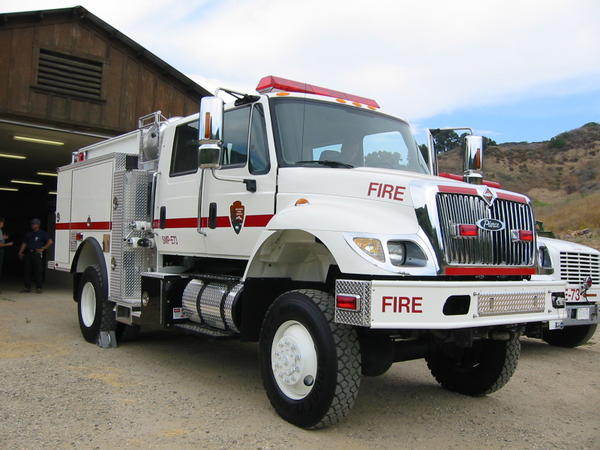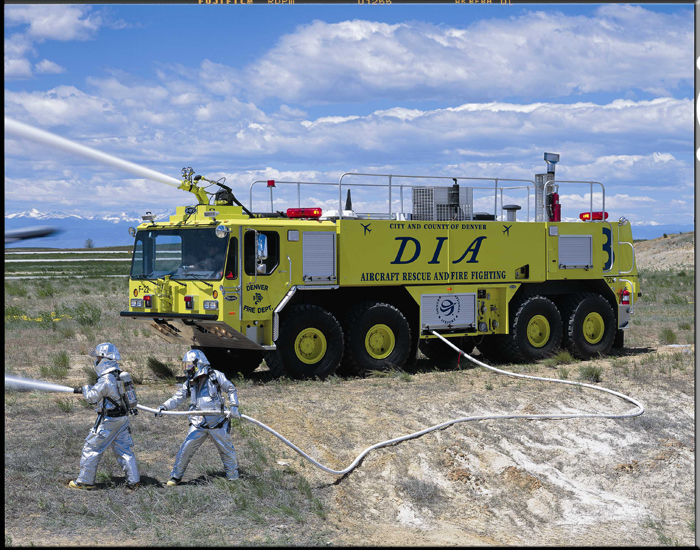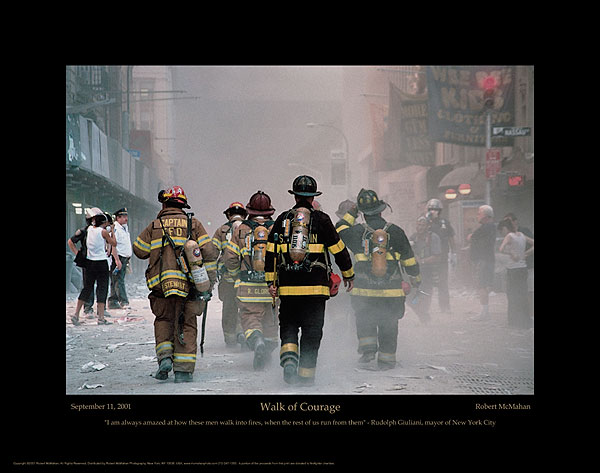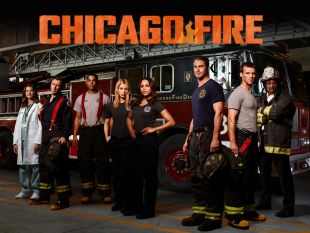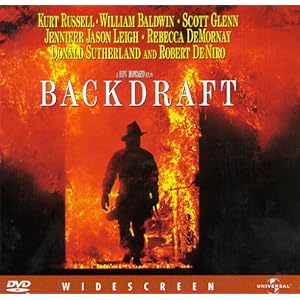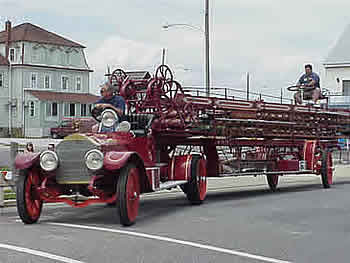In an effort to revitalize the Pitboss Lecture Series, I'm going to bring to you an overview of firefighting in America. Since we're capped at 50k characters per post, its being split between two posts. I'm going to touch on some statistics, a brief history of the fire service, and some of the equipment used. I'm also going to throw in some of my experiences, and unique calls over the years. I’ll try to keep it brief enough to not bore you too much, but feel free to ask questions as they come up and I’ll be happy to answer. I'll forewarn you, I'm not a writer so excuse the grammar.
Syllabus
Intro
Statistics
Fire Department Setup and Organization
Training and Regulatory Guidelines
Apparatus
Equipment
Compensation
9/11
The Brotherhood
Psychology of Firemen
Firefighting in Television
Cool Stories Hansel
Intro
I'll preface this by saying, firefighting isn't cut and dry across the board. How we are set up in rural NC, is by no means how things are organized and run in other parts of the country. Most of the larger cities develop their own protocols and rookie courses and I'll just touch on those because I'm much less familiar with them. We have countless traditions that date back hundreds of years, which I wont go too far in depth about. Maybe that'll be the topic of a future lecture. My hope is that through this lecture, you have a simplistic understanding of the fire service in America as a whole.
Our primary service to the community is life safety, but there is a financial benefit to having an efficient fire department as well. The better rated a fire department is, the cheaper the insurance rates will be for homes and businesses in their district. In NC, the ratings are set by the department of insurance. They have a formula derived rating system that goes form 1-10 with a 1 being the best possible rated fire department, to 10 being an unrated department. The majority of fire departments in the country are rated a 9. The lower the number, the cheaper insurance rates are for that area. Less than 1% of all departments in the country are an ISO Level 1 rated department. There are only a few in NC with Greensboro being the largest city with the rating. Most departments have a split rating, meaning a different rating for commercial structures and residential structures. Our's is a 9/5 S rating. This means our commercial structures are evaluated on a class 9 rating, while residential structures are rated at a class 5. In a nutshell, the ratings denote how prepared and capable we are to handle each size fire in our district.
I’m a Lieutenant/EMT for a volunteer fire department in Davie County NC, just outside of Winston-Salem. Our county is relatively small (41,000 residents), and we are protected by 12 volunteer fire departments each protecting a ~5 mile radius, and a county-wide rescue squad that handles heavy rescue. Our department was independently chartered in 1954 by the community and currently has 42 volunteer members on the roster and one part time paid employee. Each department in the county has at least one part time employee, and some of the larger departments have entire crews that work for them. We receive our yearly funding of $135,128.25 through a $0.05 on $100 tax evaluation. In 2011 our department ran a total of 252 calls for service and spent a cumulative 693.57 hours on scene. 47% of our calls were EMS related. Our members amassed a total of 3,000 training hours.
Upon graduating WFU in 2003, I moved back in with my parents for a few years and quite honestly got bored with the working world. 9/11 happened while I was at Wake and I felt compelled to do something for my community, which I’ll go into a little bit later in this lecture. I also saw the fire service as an adrenaline fix that I desperately needed to break up the monotony of my day to day routine. I was familiar with the fire service beforehand, because my father was a firefighter for a decade back in the 1980s. I remembered going to calls with him as a child and being enamored in what he was doing. I was drawn to the excitement and adventure of it.
Statistics
We report our figures on a yearly basis to a national recording database so these statistics are up to date through 12/31/11. There are an estimated 1,103,300 firefighters across the United States. This figure is estimated due to not all fire departments reporting. The rules and regulations for reporting vary from state to state. Of those 1,103,300, 70% or 768,150 are volunteers. Of the 30,125 fire departments in the country, 20,480 are all volunteer; 5,290 are mostly volunteer; 1,860 are mostly career; and 2,495 are all career. Delaware leads the country with 98.3 of their departments comprised of volunteers. The District of Columbia is the only territory that is entirely comprised of paid firefighters, followed by Hawaii with 90.9%. In NC we have a total of 1016 fire departments. 63% are all volunteer, 28.3% are mostly volunteer with supplemental paid firefighters, 4.1% are mostly career, and 4.5% are all career.
Since 1984, the number of volunteer firefighters in the US has declined by 14%. The explanation for the decrease is routinely attributed to: time commitment, more personnel working outside of their community, and employers not allowing firefighters to leave work to respond to calls.
The number of fires and fire related deaths peaked in the late 1970s. It was at that time that new building codes were developed, better equipment was being produced, training improved and public education was stressed. In 1977, there were 3,264,500 fires in the US resulting in 6,015 civilian deaths. Since that time, overall fires have decreased by 49% and civilian deaths by 51%.
In 2011:
All Fires
1,389,500 fires were reported in the U.S.
during 2011.
Increase 4% from 2010
3,005 civilian fire deaths
One civilian death occurred every two hours and 55 minutes
17,500 civilian fire injuries
One civilian injury occurred every 30 minutes
$11.7 billion in property damage
A fire department responded to a fire every 23 seconds
Structure Fires
484,500 structure fires occurred in the U.S. during 2011.
Less than 1% increase from 2010
2,640 civilian fire deaths
15,635 civilian fire injuries
$9.7 billion in property damage
One structure fire was reported every 65 seconds
Vehicle Fires
219,000 vehicle fires occurred in the U.S. during 2011.
Increase 2% from 2010
300 civilian fire deaths
1,190 civilian fire injuries
$1.4 billion in property damage
One vehicle fire was reported every 144 seconds
Grass/Woods/Brush Fires
686,000 outside and other fires occurred in the U.S. during 2011.
Increase 8% from 2010
65 civilian fire deaths
675 civilian fire injuries
$616 million in property damage
One outside fire was reported every 46 seconds
In 1981, the US began keeping track of firefighter deaths. Until that time, records varied from state to state and no uniformed reporting was used. From 1/1/81 to 12/31/11, there were 3836 firefighter deaths in the US. Roughly half were career and half volunteer. New York has the largest number of firefighter fatalities at 466. The majority of those (343) occurred on 9/11/01. So far in 2012, 63 firefighters have lost their lives in the line of duty. A snapshot of firefighter fatalities from 2007-2011:
Type of Duty
Type of Incident
Nature of Fatal Injury
States with Most Fatalities
Month of the Year Most Occur
For more statistics, feel free to visit:
http://www.nvfc.org/media/statistics-and-fact-sheets/
http://apps.usfa.fema.gov/census/summary.cfm#c
http://www.nfpa.org/assets/files/pdf/os.fireloss.pdf
Fire Department Setup and Organization
Fire departments in the US fall under one basic structure for its officers. It was originally derived from the military with a few modifications over the years. According to FEMA’s NIMS (National Incident Management System), optimal command is one leader per 7 firefighters. The larger the incident, the more officers are required. The number of each position can vary per department. The officer ranks and duties are as follows:
Chief – Represented by 5 crossed bugles. They rarely if ever fight fires, but handle the paperwork, and are ultimately responsible for the actions of the department as a whole. They wear white helmets, and occasionally will have white fire gear to easily be located on a scene. Each department will have only one Chief. When called to a scene, they take over command.

Deputy or Assistant Chief – Represented by 4 crossed bugles. They also wear white helmets. In large departments with multiple stations, these are positions over that particular station. They report to the Chief, and handle personnel issues within their particular station. They respond and are in command of the scene. Anything they cannot handle gets escalated to the Chief. On large incidents, you may have multiple Deputy/Assistant Chiefs, who are handling different aspects of the call. In cases where the Chief is not present on the call, one of the Deputy/Assistant Chiefs will assume command.

Division or Battalion Chief – Represented by 3 crossed bugles. Some departments don’t use these positions, and are mainly found in very large departments where you have multiple specialties. You may have a Battalion Chief over a specialty group. i.e. you have a Truck Crew, Rescue Crew, and Haz-Mat crew in a station, you may have a Division or Battalion Chief over each group. They wear white helmets as well.

Captains – Represented by 2 bugles, either parallel or occasionally crossed. They wear red helmets and are usually the line officers with the lieutenants. They’re quite often interchangeable with Lt’s and are the ones riding shotgun on the first arriving apparatus. They have a maximum 7 personnel in their crew.

Lieutenants – Represented by a single bugle. They perform the same duties as Capt’s, but may have slightly less experience. They also wear red helmets. IMO, they should change the structure to combine Capt’s and Lt’s into one position, because it’s a waste having them perform the same function and duties.

Safety Officers – No specific insignia. They are responsible for the safety of all personnel on the scene. They report directly to the incident commander, and have no personnel under their command. They’re typically the ones walking around the scene observing and relaying information to the command post. Ours wear blue helmets, and are the older most experienced members of the department, whose body might not be physically able to fight fire any longer.
Our department has 1 Chief, 2 Assistant Chiefs, 2 Captains, 2 Lieutenants, and 2 Safety Officers. Our regular firefighters wear yellow or black helmets. Probationary firefighters have a blue stripe down their helmets to notify everyone of their inexperience. Our probationary period is 6 months long, at which time they are evaluated and voted on to become a full fledged firefighter. Until they come off probation, they are not allowed to enter burning structures, or drive apparatus. Some departments have a yearlong probation; others keep candidates on probation until they’ve reached their firefighter state certification.
Training
For training, there are multiple textbooks that we operate out of, but the most widely used in the US is the IFSTA (International Fire Service Training Assocation) Essentials of Firefighting 5[SUP]th[/SUP] Edition. Its 1440 pages broken into 23 chapters of the most exciting information EVAR.

http://wps.prenhall.com/chet_ifsta_essentials_5/80/20494/5246605.cw/index.html
In the state of NC, there are 21 classes for a total of 345 contact hours required to achieve your state certification. Rural department education is handled through the NC Community College system, and firefighters receive college credit for completing the courses. Larger departments that have full time paid personnel send firefighters through a 6 month rookie school to achieve certification. It took me almost 5 years of going to a weekly 3 hour Monday night meeting and 2 weekend seminars each year to achieve my certification. Compared to most volunteer firefighters, that was relatively quick. The listings of classes are listed below.
Requirements for NC Firefighter Level 1 and 2 Certification
FD Orientation and Safety
Fire Alarms and Communications
Fire Behavior
Portable Extinguishers
Personal Protective Equipment
Forcible Entry
Ventilation
Ropes
Ladders
Fire Hoses, Streams, and Appliances
Foam Fire Streams
Fire Control
Salvage
Overhaul
Emergency Medical Care
Rescue
Water Supplies
Sprinklers
Response to Haz-Mat and Terrorism
Fire Prevention, Education, and Causality
Building Construction
In addition to the basic firefighting classes listed above, there are other certifications NC Firefighters can achieve, which I’ll mention but not go into specifics.
Hazardous Materials Level 1 (Operations) and Level 2 (Technician) Certification
Driver Operator Aerial and Pumps
Rapid Intervention Team
Basic Rescue Tech
Emergency Rescue Tech
Technical Rescuer
Fire and Life Safety Educator
Emergency Vehicle Driver
We also fall under NFPA (National Fire Protection Association) standards which regulate equipment and tactics, OSHA, and the NIMS (National Incident Management System)
Equipment
In the early days of firefighting, your turnout gear was whatever you happened to be wearing at the time of the call. We progressed into rubber gear, and that evolved into the kevlar and nomex gear that we have today. Contrary to popular belief, firefighting gear is not fire proof. It will ignite if it gets hot enough. It is extremely fire resistant though. NFPA states that all firefighting gear must be rated at a TPP (Thermal Protective Performance) rating of 35. An easy way to transfer that number into time in heat is to cut your TPP rating in half, this is the number of seconds you have in 1,000 degrees. This means that we have about 18 seconds to in a room of 1,000 before we start feeling the heat. Essentially all structure fires will be in between 400 and 800 degrees unless there is an abundance of accelerants on fire. As a result, we rarely look at a fire while inside a structure. Almost all the time, we are flowing water as we go through the door. The gear is designed to reflect heat away from the body through multiple layers, but on the flip side, it also does an excellent job of keeping our body heat in. The gear itself weighs and additional 80 lbs, on top of working in conditions that routinely kill every living organism in sight, tends to build up a lot of heat. Our airpacks are designed to last 30 minutes, at which time you're so exhausted that you're ready to come out. The picture below is of a toy, but its the best example of everything a firefighter typically carries into a fire.
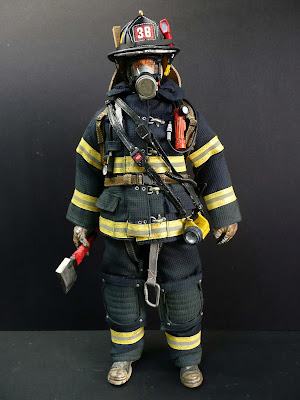
The cost to train and equip a firefighter is approximately $16,000.
Helmet: $ 225
Gloves: $ 95
Coat: $ 1,200
Pants: $ 900
Hood: $ 40
Boots: $ 235
SCBA: $4,300
Pager and Radio: $1,000
Training: $7,800
The SCBA (Self Contained Breathing Apparatus) is one of the most important devices we carry with us with regards to structure fires. Without it, our interior firefighting capabilities would be severely limited. It functions much like scuba gear, except this piece covers your entire face and is not designed to be used under water. Until the 1970s, firefighters would enter buildings to put fires out with nothing but their mustaches to filter out the toxic smoke. As a result, firefighters from that time have rates of lung cancer that are comparable to coal miners. The bottles are designed to provide clean, cool air for up to 30 minutes. The more out of shape you are or the heavier you breath, you can suck down a tank faster than that, but on average they last about 30 minutes. In the picture below, the gauge on the right shows how much air is left in the tank. While on the body, its conveniently on your right shoulder so you can easily tell how much oxygen is left. Just in case the firefighter isnt paying attention to the gauge, as the supply of air approaches 5 minutes left, the mask will vibrate and make an audible noise to notify you to exit the structure.

Pass (Personal Alert Safety System) Devices are credited with saving thousands of downed or injured firefighters. They're integrated into the SCBA and are motion activated. Once the air pack is turned on, the PASS will alarm if no motion is sensed for 15 seconds. In the event of a down firefighter, the PASS will activate to alert others to the location of the firefighter. At 95 decibels, its impossible not to hear the alarm. PASS alarms also have a manual alert in case a firefighter were to get disoriented or need to call a "mayday".
One of the coolest parts about being a fireman is that we have some pretty badass tools to play with that the average person doesnt. We carry tools on each truck that will get us into or out of practically any building or situation know to man. We'd have a little trouble with a bank vault, but I pray I'll never have to work with one of those.
The most common tools are what we refer to as the "irons". That consists of a flathead axe and a halligan bar. Every crew entering a structure is supposed to have a set of irons with them. They're used to pry open doors, windows, or to break through walls.
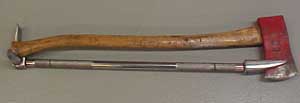
Pike poles for pulling ceilings or breaking windows for ventilation.

Spanner wrenches are used at all facets of the fire scene. Anywhere there are hoses, spanner wrenches are nearby. They're used for tightening and loosening hose attachments.

One of my favorite toys is the K-12. Its a chain saw engine with a circular blade instead of a bar. The blades are interchangeable and can cut through anything from metal, masonry, or cement.

The Hurst Tool, commonly referred to as the Jaws of Life is probably the most recognizable piece of equipment we carry. Although it cuts very efficiently with its interior teeth, the primary purpose of the tool is for spreading rather than cutting. Its primarily used for vehicle extrication.

One of the more recent additions to our toolbag is the thermal imaging camera. We purchased our first in 2004 at a cost of $12,000. Since that time, the picture quality has improved greatly, and the cost has almost been cut in half. In a structure fire, there is very little light if any, due to the thick smoke. The cooler air is on the floor, which is why we crouch down. The camera allows us to quickly scan a room for occupants, and locate the fire if we're not able to see it. Its a great tool, but also a crutch. Too many firefighters tend to rely heavily on the camera for searches and ignore their other senses.

Syllabus
Intro
Statistics
Fire Department Setup and Organization
Training and Regulatory Guidelines
Apparatus
Equipment
Compensation
9/11
The Brotherhood
Psychology of Firemen
Firefighting in Television
Cool Stories Hansel
Intro
I'll preface this by saying, firefighting isn't cut and dry across the board. How we are set up in rural NC, is by no means how things are organized and run in other parts of the country. Most of the larger cities develop their own protocols and rookie courses and I'll just touch on those because I'm much less familiar with them. We have countless traditions that date back hundreds of years, which I wont go too far in depth about. Maybe that'll be the topic of a future lecture. My hope is that through this lecture, you have a simplistic understanding of the fire service in America as a whole.
Our primary service to the community is life safety, but there is a financial benefit to having an efficient fire department as well. The better rated a fire department is, the cheaper the insurance rates will be for homes and businesses in their district. In NC, the ratings are set by the department of insurance. They have a formula derived rating system that goes form 1-10 with a 1 being the best possible rated fire department, to 10 being an unrated department. The majority of fire departments in the country are rated a 9. The lower the number, the cheaper insurance rates are for that area. Less than 1% of all departments in the country are an ISO Level 1 rated department. There are only a few in NC with Greensboro being the largest city with the rating. Most departments have a split rating, meaning a different rating for commercial structures and residential structures. Our's is a 9/5 S rating. This means our commercial structures are evaluated on a class 9 rating, while residential structures are rated at a class 5. In a nutshell, the ratings denote how prepared and capable we are to handle each size fire in our district.
I’m a Lieutenant/EMT for a volunteer fire department in Davie County NC, just outside of Winston-Salem. Our county is relatively small (41,000 residents), and we are protected by 12 volunteer fire departments each protecting a ~5 mile radius, and a county-wide rescue squad that handles heavy rescue. Our department was independently chartered in 1954 by the community and currently has 42 volunteer members on the roster and one part time paid employee. Each department in the county has at least one part time employee, and some of the larger departments have entire crews that work for them. We receive our yearly funding of $135,128.25 through a $0.05 on $100 tax evaluation. In 2011 our department ran a total of 252 calls for service and spent a cumulative 693.57 hours on scene. 47% of our calls were EMS related. Our members amassed a total of 3,000 training hours.
Upon graduating WFU in 2003, I moved back in with my parents for a few years and quite honestly got bored with the working world. 9/11 happened while I was at Wake and I felt compelled to do something for my community, which I’ll go into a little bit later in this lecture. I also saw the fire service as an adrenaline fix that I desperately needed to break up the monotony of my day to day routine. I was familiar with the fire service beforehand, because my father was a firefighter for a decade back in the 1980s. I remembered going to calls with him as a child and being enamored in what he was doing. I was drawn to the excitement and adventure of it.
Statistics
We report our figures on a yearly basis to a national recording database so these statistics are up to date through 12/31/11. There are an estimated 1,103,300 firefighters across the United States. This figure is estimated due to not all fire departments reporting. The rules and regulations for reporting vary from state to state. Of those 1,103,300, 70% or 768,150 are volunteers. Of the 30,125 fire departments in the country, 20,480 are all volunteer; 5,290 are mostly volunteer; 1,860 are mostly career; and 2,495 are all career. Delaware leads the country with 98.3 of their departments comprised of volunteers. The District of Columbia is the only territory that is entirely comprised of paid firefighters, followed by Hawaii with 90.9%. In NC we have a total of 1016 fire departments. 63% are all volunteer, 28.3% are mostly volunteer with supplemental paid firefighters, 4.1% are mostly career, and 4.5% are all career.
Since 1984, the number of volunteer firefighters in the US has declined by 14%. The explanation for the decrease is routinely attributed to: time commitment, more personnel working outside of their community, and employers not allowing firefighters to leave work to respond to calls.
The number of fires and fire related deaths peaked in the late 1970s. It was at that time that new building codes were developed, better equipment was being produced, training improved and public education was stressed. In 1977, there were 3,264,500 fires in the US resulting in 6,015 civilian deaths. Since that time, overall fires have decreased by 49% and civilian deaths by 51%.
In 2011:
All Fires
1,389,500 fires were reported in the U.S.
during 2011.
Increase 4% from 2010
3,005 civilian fire deaths
One civilian death occurred every two hours and 55 minutes
17,500 civilian fire injuries
One civilian injury occurred every 30 minutes
$11.7 billion in property damage
A fire department responded to a fire every 23 seconds
Structure Fires
484,500 structure fires occurred in the U.S. during 2011.
Less than 1% increase from 2010
2,640 civilian fire deaths
15,635 civilian fire injuries
$9.7 billion in property damage
One structure fire was reported every 65 seconds
Vehicle Fires
219,000 vehicle fires occurred in the U.S. during 2011.
Increase 2% from 2010
300 civilian fire deaths
1,190 civilian fire injuries
$1.4 billion in property damage
One vehicle fire was reported every 144 seconds
Grass/Woods/Brush Fires
686,000 outside and other fires occurred in the U.S. during 2011.
Increase 8% from 2010
65 civilian fire deaths
675 civilian fire injuries
$616 million in property damage
One outside fire was reported every 46 seconds
In 1981, the US began keeping track of firefighter deaths. Until that time, records varied from state to state and no uniformed reporting was used. From 1/1/81 to 12/31/11, there were 3836 firefighter deaths in the US. Roughly half were career and half volunteer. New York has the largest number of firefighter fatalities at 466. The majority of those (343) occurred on 9/11/01. So far in 2012, 63 firefighters have lost their lives in the line of duty. A snapshot of firefighter fatalities from 2007-2011:
Type of Duty
| On-Scene Fire | 29.7% |
| After | 17.2% |
| Other On-Duty | 16.8% |
| Responding | 15.4% |
| Training | 10.8% |
Type of Incident
| Structure Fire | 31.8% |
| Non Incident-Related | [27.3% |
| Motor Vehicle Accident | 10.1% |
| Wildland | 9.1% |
| Other | 6.8% |
Nature of Fatal Injury
| Heart Attack | 46.5% |
| Trauma | 27.7% |
| Asphyxiation | 8.3% |
| Other | 6% |
| CVA | 3.9% |
States with Most Fatalities
| New York | 40 |
| California | 38 |
| Pennsylvania | 37 |
| North Carolina | 34 |
| Ohio | 25 |
Month of the Year Most Occur
| January | 36.2% |
| October | 13.8% |
| March | 5.7% |
| August | 5.7% |
| June | 5.5% |
| July | 5.4% |
| April | 5.2% |
| February | 5.1% |
| December | 4.9% |
| November | 4.6% |
| October | 4.1% |
| May | 3.8% |
For more statistics, feel free to visit:
http://www.nvfc.org/media/statistics-and-fact-sheets/
http://apps.usfa.fema.gov/census/summary.cfm#c
http://www.nfpa.org/assets/files/pdf/os.fireloss.pdf
Fire Department Setup and Organization
Fire departments in the US fall under one basic structure for its officers. It was originally derived from the military with a few modifications over the years. According to FEMA’s NIMS (National Incident Management System), optimal command is one leader per 7 firefighters. The larger the incident, the more officers are required. The number of each position can vary per department. The officer ranks and duties are as follows:
Chief – Represented by 5 crossed bugles. They rarely if ever fight fires, but handle the paperwork, and are ultimately responsible for the actions of the department as a whole. They wear white helmets, and occasionally will have white fire gear to easily be located on a scene. Each department will have only one Chief. When called to a scene, they take over command.
Deputy or Assistant Chief – Represented by 4 crossed bugles. They also wear white helmets. In large departments with multiple stations, these are positions over that particular station. They report to the Chief, and handle personnel issues within their particular station. They respond and are in command of the scene. Anything they cannot handle gets escalated to the Chief. On large incidents, you may have multiple Deputy/Assistant Chiefs, who are handling different aspects of the call. In cases where the Chief is not present on the call, one of the Deputy/Assistant Chiefs will assume command.
Division or Battalion Chief – Represented by 3 crossed bugles. Some departments don’t use these positions, and are mainly found in very large departments where you have multiple specialties. You may have a Battalion Chief over a specialty group. i.e. you have a Truck Crew, Rescue Crew, and Haz-Mat crew in a station, you may have a Division or Battalion Chief over each group. They wear white helmets as well.
Captains – Represented by 2 bugles, either parallel or occasionally crossed. They wear red helmets and are usually the line officers with the lieutenants. They’re quite often interchangeable with Lt’s and are the ones riding shotgun on the first arriving apparatus. They have a maximum 7 personnel in their crew.
Lieutenants – Represented by a single bugle. They perform the same duties as Capt’s, but may have slightly less experience. They also wear red helmets. IMO, they should change the structure to combine Capt’s and Lt’s into one position, because it’s a waste having them perform the same function and duties.
Safety Officers – No specific insignia. They are responsible for the safety of all personnel on the scene. They report directly to the incident commander, and have no personnel under their command. They’re typically the ones walking around the scene observing and relaying information to the command post. Ours wear blue helmets, and are the older most experienced members of the department, whose body might not be physically able to fight fire any longer.
Our department has 1 Chief, 2 Assistant Chiefs, 2 Captains, 2 Lieutenants, and 2 Safety Officers. Our regular firefighters wear yellow or black helmets. Probationary firefighters have a blue stripe down their helmets to notify everyone of their inexperience. Our probationary period is 6 months long, at which time they are evaluated and voted on to become a full fledged firefighter. Until they come off probation, they are not allowed to enter burning structures, or drive apparatus. Some departments have a yearlong probation; others keep candidates on probation until they’ve reached their firefighter state certification.
Training
For training, there are multiple textbooks that we operate out of, but the most widely used in the US is the IFSTA (International Fire Service Training Assocation) Essentials of Firefighting 5[SUP]th[/SUP] Edition. Its 1440 pages broken into 23 chapters of the most exciting information EVAR.
http://wps.prenhall.com/chet_ifsta_essentials_5/80/20494/5246605.cw/index.html
In the state of NC, there are 21 classes for a total of 345 contact hours required to achieve your state certification. Rural department education is handled through the NC Community College system, and firefighters receive college credit for completing the courses. Larger departments that have full time paid personnel send firefighters through a 6 month rookie school to achieve certification. It took me almost 5 years of going to a weekly 3 hour Monday night meeting and 2 weekend seminars each year to achieve my certification. Compared to most volunteer firefighters, that was relatively quick. The listings of classes are listed below.
Requirements for NC Firefighter Level 1 and 2 Certification
FD Orientation and Safety
Fire Alarms and Communications
Fire Behavior
Portable Extinguishers
Personal Protective Equipment
Forcible Entry
Ventilation
Ropes
Ladders
Fire Hoses, Streams, and Appliances
Foam Fire Streams
Fire Control
Salvage
Overhaul
Emergency Medical Care
Rescue
Water Supplies
Sprinklers
Response to Haz-Mat and Terrorism
Fire Prevention, Education, and Causality
Building Construction
In addition to the basic firefighting classes listed above, there are other certifications NC Firefighters can achieve, which I’ll mention but not go into specifics.
Hazardous Materials Level 1 (Operations) and Level 2 (Technician) Certification
Driver Operator Aerial and Pumps
Rapid Intervention Team
Basic Rescue Tech
Emergency Rescue Tech
Technical Rescuer
Fire and Life Safety Educator
Emergency Vehicle Driver
We also fall under NFPA (National Fire Protection Association) standards which regulate equipment and tactics, OSHA, and the NIMS (National Incident Management System)
Equipment
In the early days of firefighting, your turnout gear was whatever you happened to be wearing at the time of the call. We progressed into rubber gear, and that evolved into the kevlar and nomex gear that we have today. Contrary to popular belief, firefighting gear is not fire proof. It will ignite if it gets hot enough. It is extremely fire resistant though. NFPA states that all firefighting gear must be rated at a TPP (Thermal Protective Performance) rating of 35. An easy way to transfer that number into time in heat is to cut your TPP rating in half, this is the number of seconds you have in 1,000 degrees. This means that we have about 18 seconds to in a room of 1,000 before we start feeling the heat. Essentially all structure fires will be in between 400 and 800 degrees unless there is an abundance of accelerants on fire. As a result, we rarely look at a fire while inside a structure. Almost all the time, we are flowing water as we go through the door. The gear is designed to reflect heat away from the body through multiple layers, but on the flip side, it also does an excellent job of keeping our body heat in. The gear itself weighs and additional 80 lbs, on top of working in conditions that routinely kill every living organism in sight, tends to build up a lot of heat. Our airpacks are designed to last 30 minutes, at which time you're so exhausted that you're ready to come out. The picture below is of a toy, but its the best example of everything a firefighter typically carries into a fire.

The cost to train and equip a firefighter is approximately $16,000.
Helmet: $ 225
Gloves: $ 95
Coat: $ 1,200
Pants: $ 900
Hood: $ 40
Boots: $ 235
SCBA: $4,300
Pager and Radio: $1,000
Training: $7,800
The SCBA (Self Contained Breathing Apparatus) is one of the most important devices we carry with us with regards to structure fires. Without it, our interior firefighting capabilities would be severely limited. It functions much like scuba gear, except this piece covers your entire face and is not designed to be used under water. Until the 1970s, firefighters would enter buildings to put fires out with nothing but their mustaches to filter out the toxic smoke. As a result, firefighters from that time have rates of lung cancer that are comparable to coal miners. The bottles are designed to provide clean, cool air for up to 30 minutes. The more out of shape you are or the heavier you breath, you can suck down a tank faster than that, but on average they last about 30 minutes. In the picture below, the gauge on the right shows how much air is left in the tank. While on the body, its conveniently on your right shoulder so you can easily tell how much oxygen is left. Just in case the firefighter isnt paying attention to the gauge, as the supply of air approaches 5 minutes left, the mask will vibrate and make an audible noise to notify you to exit the structure.

Pass (Personal Alert Safety System) Devices are credited with saving thousands of downed or injured firefighters. They're integrated into the SCBA and are motion activated. Once the air pack is turned on, the PASS will alarm if no motion is sensed for 15 seconds. In the event of a down firefighter, the PASS will activate to alert others to the location of the firefighter. At 95 decibels, its impossible not to hear the alarm. PASS alarms also have a manual alert in case a firefighter were to get disoriented or need to call a "mayday".
One of the coolest parts about being a fireman is that we have some pretty badass tools to play with that the average person doesnt. We carry tools on each truck that will get us into or out of practically any building or situation know to man. We'd have a little trouble with a bank vault, but I pray I'll never have to work with one of those.
The most common tools are what we refer to as the "irons". That consists of a flathead axe and a halligan bar. Every crew entering a structure is supposed to have a set of irons with them. They're used to pry open doors, windows, or to break through walls.

Pike poles for pulling ceilings or breaking windows for ventilation.

Spanner wrenches are used at all facets of the fire scene. Anywhere there are hoses, spanner wrenches are nearby. They're used for tightening and loosening hose attachments.

One of my favorite toys is the K-12. Its a chain saw engine with a circular blade instead of a bar. The blades are interchangeable and can cut through anything from metal, masonry, or cement.

The Hurst Tool, commonly referred to as the Jaws of Life is probably the most recognizable piece of equipment we carry. Although it cuts very efficiently with its interior teeth, the primary purpose of the tool is for spreading rather than cutting. Its primarily used for vehicle extrication.

One of the more recent additions to our toolbag is the thermal imaging camera. We purchased our first in 2004 at a cost of $12,000. Since that time, the picture quality has improved greatly, and the cost has almost been cut in half. In a structure fire, there is very little light if any, due to the thick smoke. The cooler air is on the floor, which is why we crouch down. The camera allows us to quickly scan a room for occupants, and locate the fire if we're not able to see it. Its a great tool, but also a crutch. Too many firefighters tend to rely heavily on the camera for searches and ignore their other senses.









